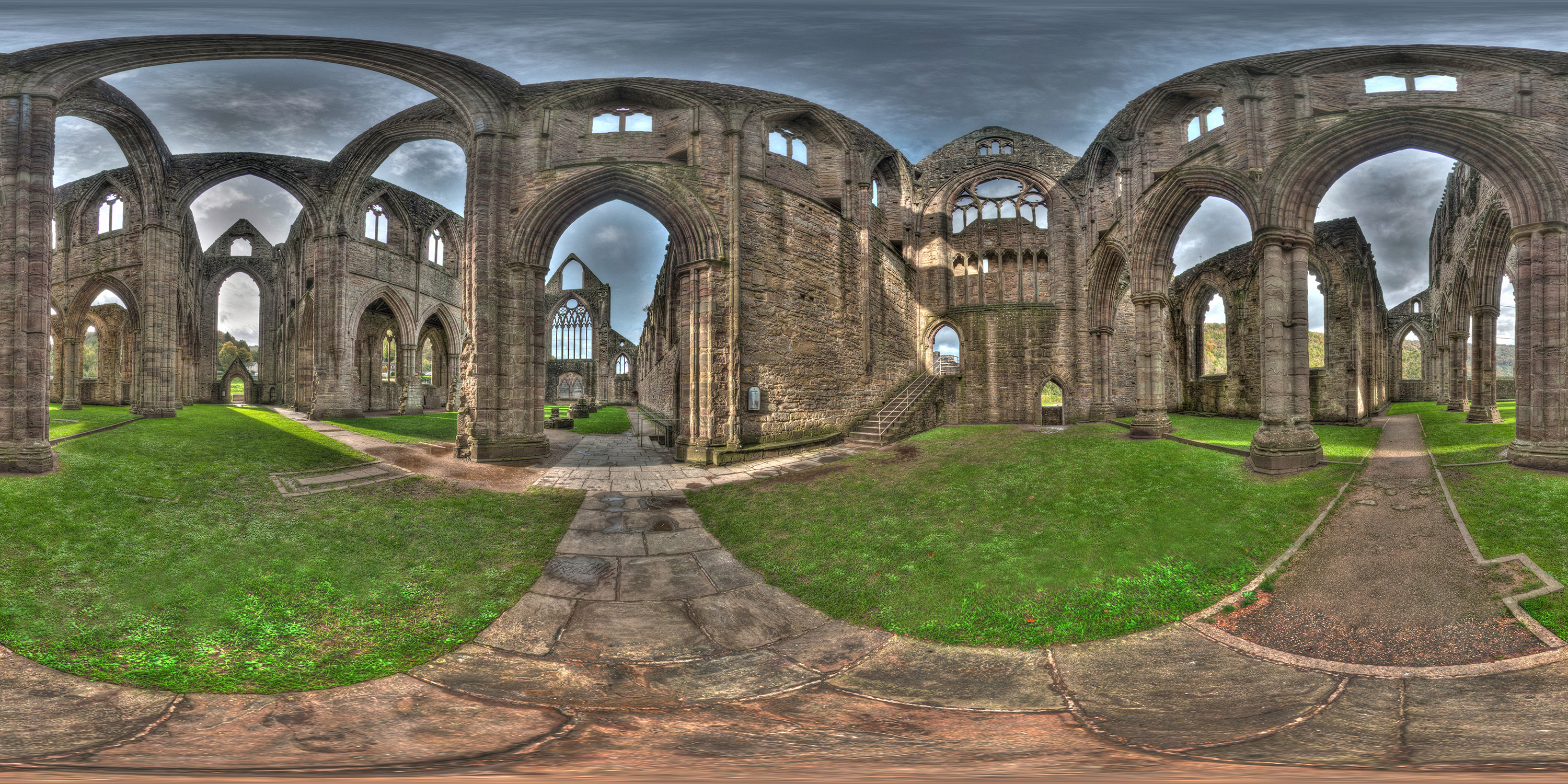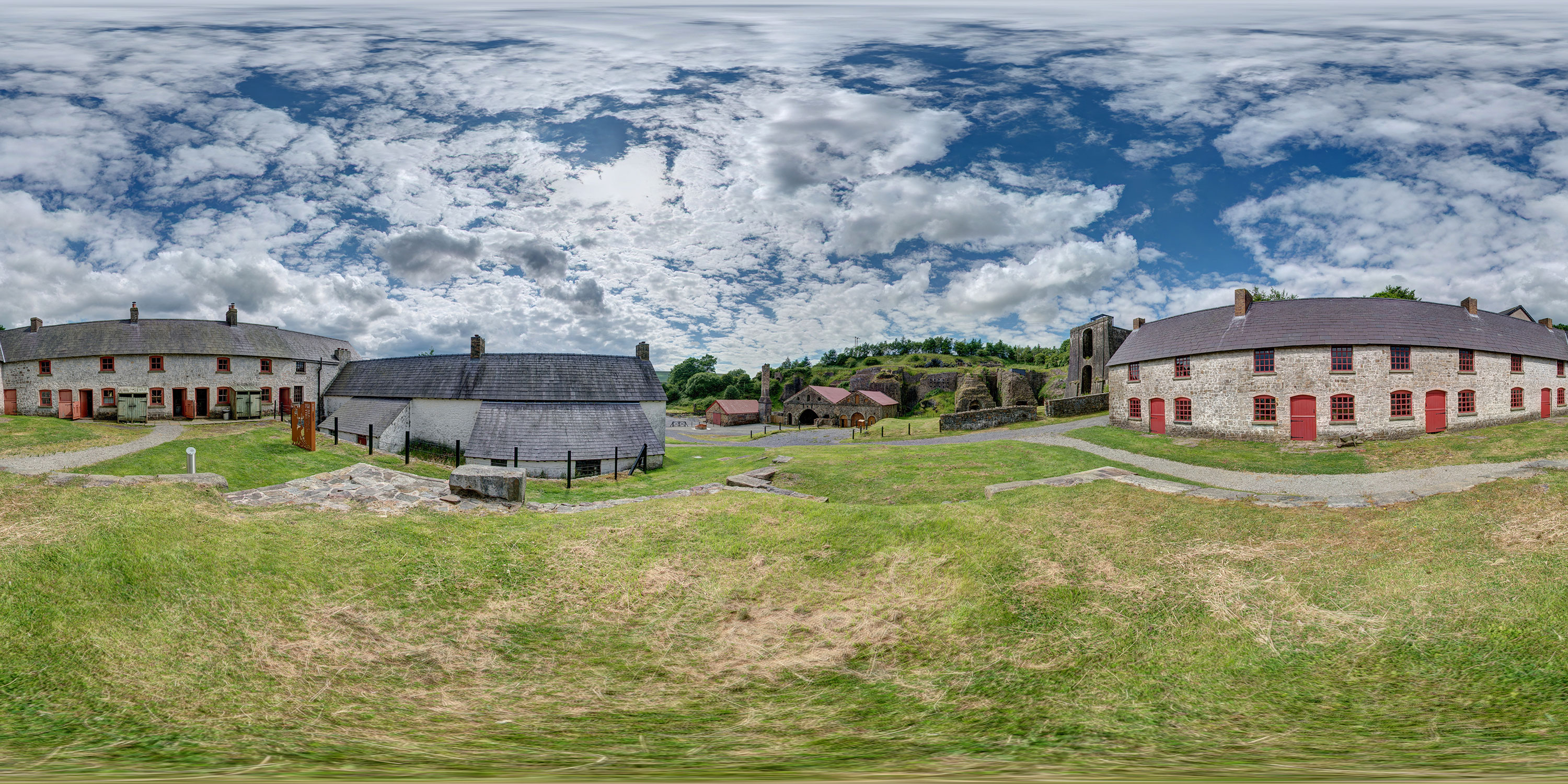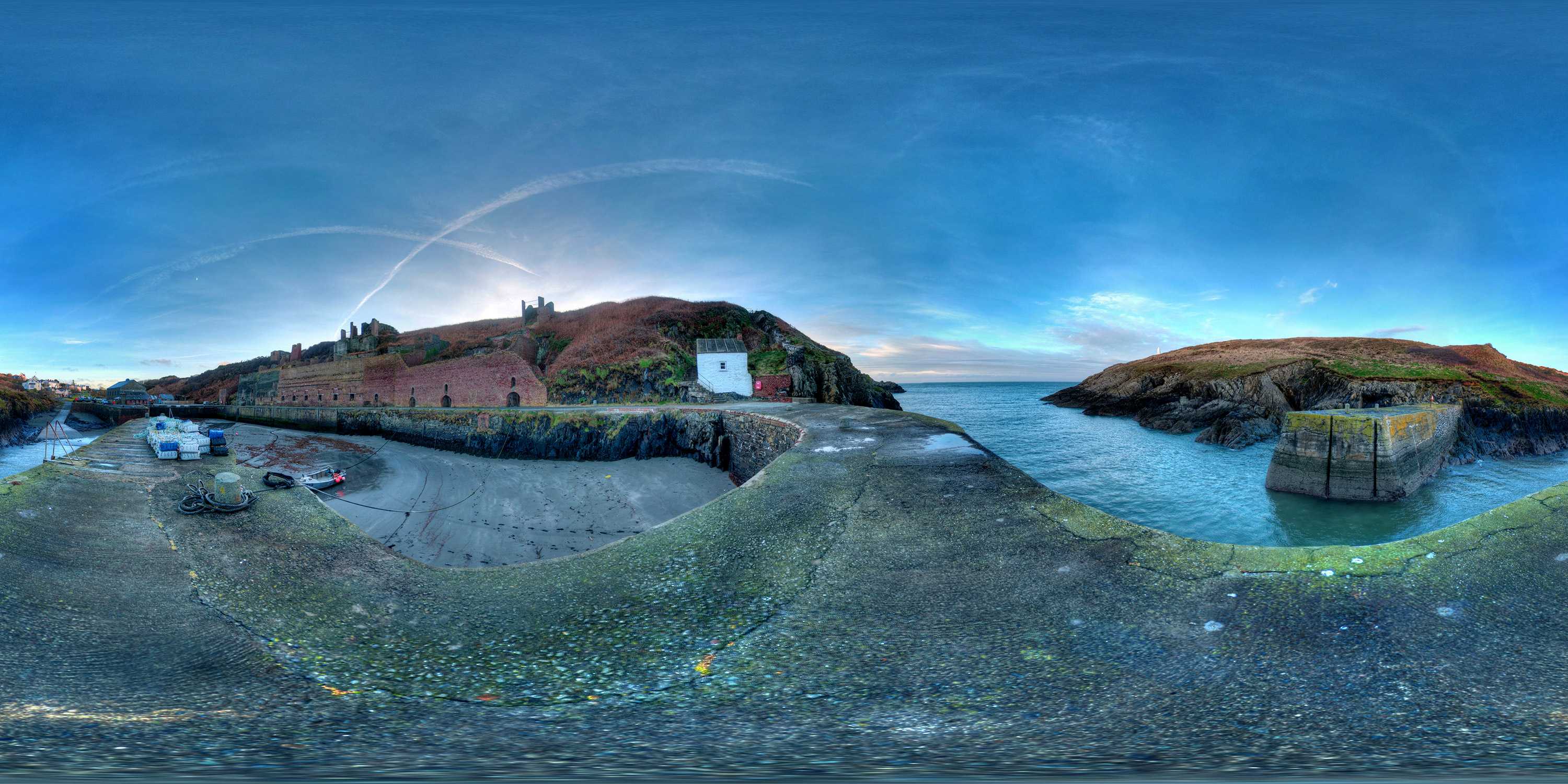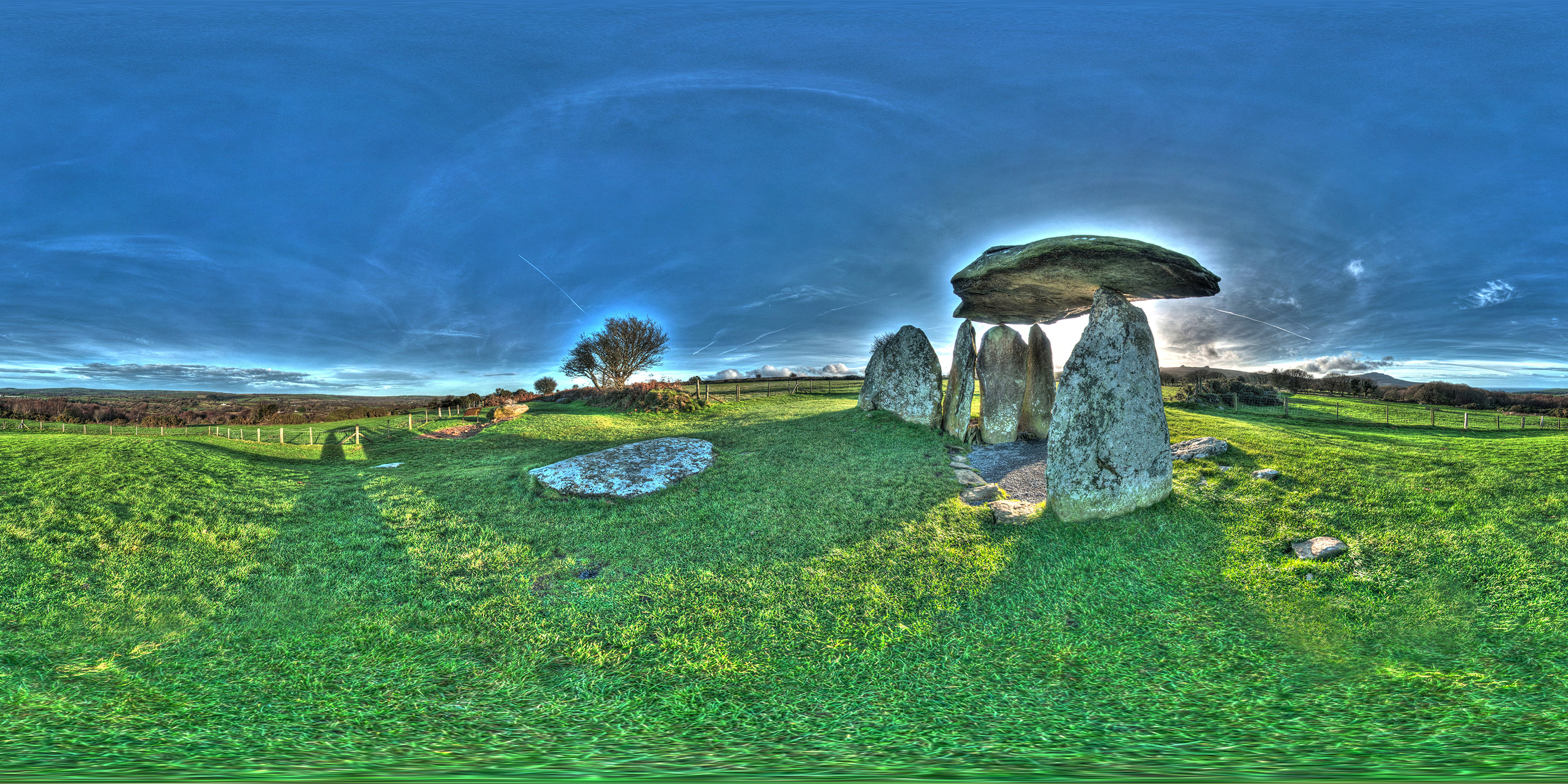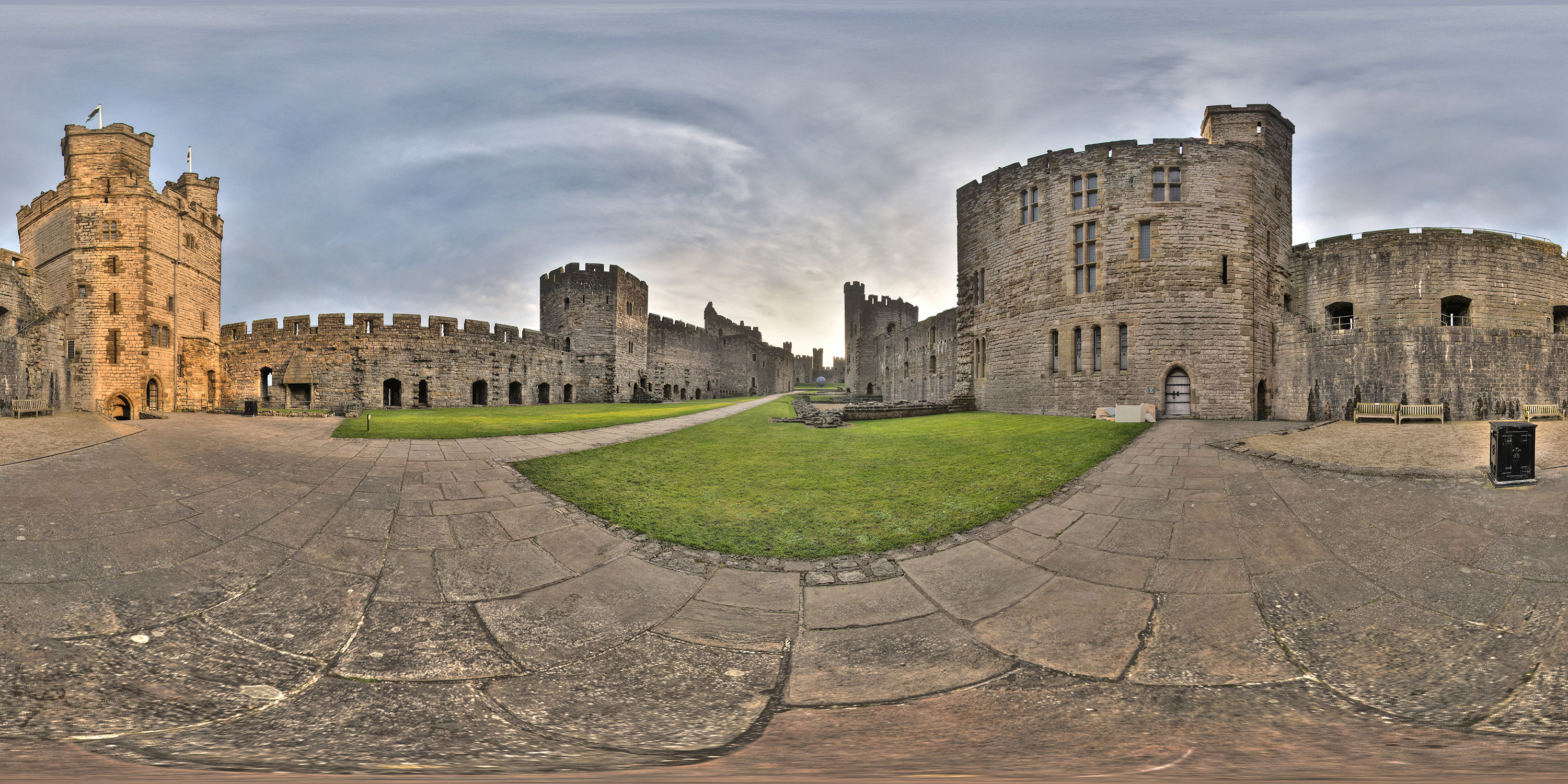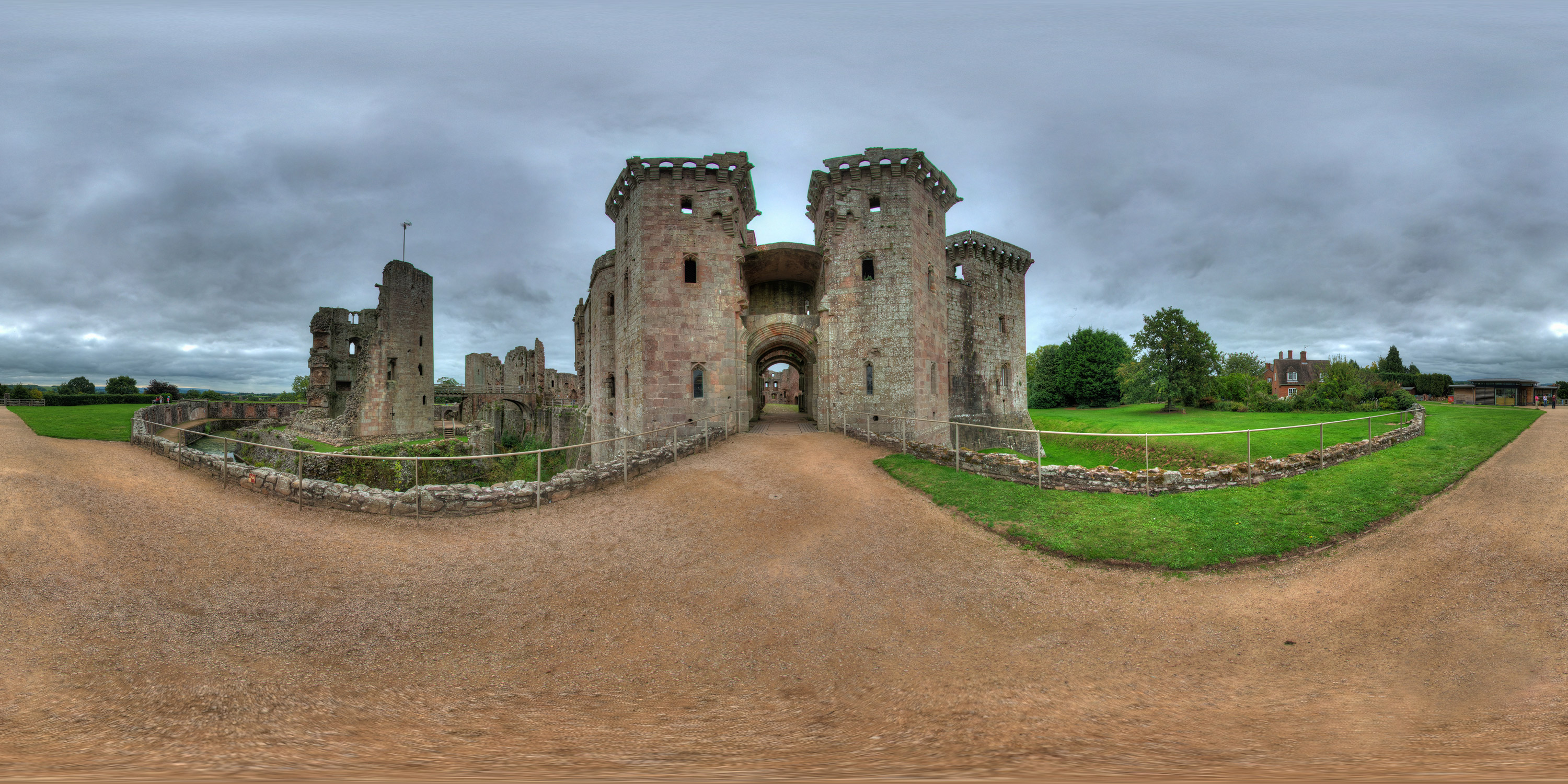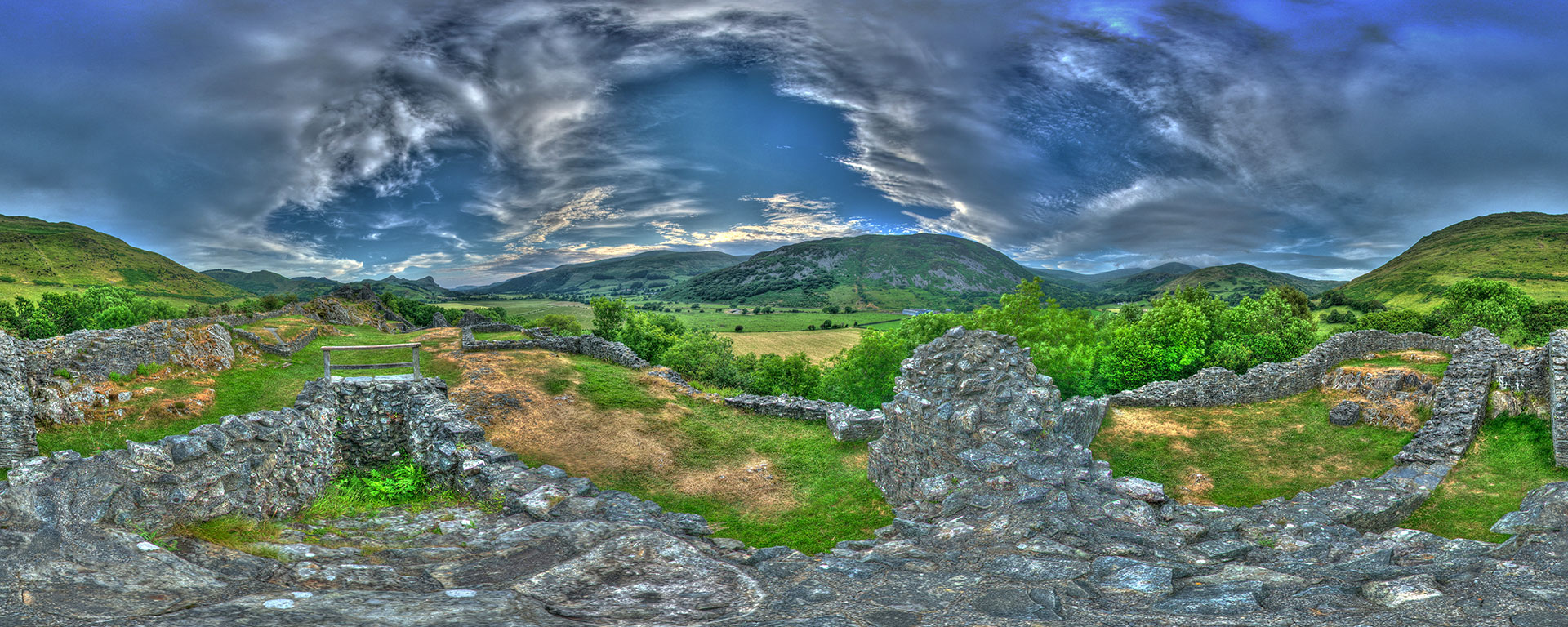The Cistercian abbey of Tintern is one of the greatest monastic ruins of Wales. It was only the second Cistercian foundation in Britain, and the first in Wales, and was founded on 9 May 1131 by Walter de Clare, lord of Chepstow. It soon prospered, thanks to endowments of land in Gwent and Gloucestershire, and buildings were added and updated in every century until its dissolution in 1536. Its position well away from the Welsh heartland meant that, unlike Margam, Neath and Llanthony, it suffered little in the periodic Welsh uprisings of the medieval period..
Virtual Tours
Valle Crucis Abbey (Valley of the Cross) is a Cistercian abbey located in Llantysilio in Denbighshire, Wales. More formally the Abbey Church of the Blessed Virgin Mary, Valle Crucis it is known in Welsh both as Abaty Glyn Egwestl and Abaty Glyn y Groes. The abbey was built in 1201 by Madog ap Gruffydd Maelor, Prince of Powys Fadog. Valle Crucis was dissolved in 1537 during the Dissolution of the Monasteries, and subsequently fell into serious disrepair. The building is now a ruin, though large parts of the original structure still survive. Valle Crucis Abbey is now under the care of Cadw.
Blaenavon Ironworks is a former industrial site which is now a museum in Blaenavon in Wales. The ironworks was of crucial importance in the development of the ability to use cheap, low quality, high sulphur iron ores worldwide. It was the site of the experiments by Sidney Gilchrist Thomas and his cousin Percy Gilchrist that led to “the basic steel process” or “Gilchrist-Thomas process”.
The ironworks is on the outskirts of Blaenavon, in the borough of Torfaen, within the Blaenavon Industrial Landscape World Heritage Site.
Porthgain is a small coastal hamlet on the north coast of St Davids Peninsula. At one time, the harbour exported slate from quarries a few miles south at Abereiddi, Trwynllwyd and Porthgain itself. In later years the slate trade was abandoned, although Porthgain survived by turning to brickmaking, and later to crushed roadstone. In 1987 Porthgain was designated as a conservation area. The harbour, still home to local fishermen, can get very busy in the summer with recreational boaters and hikers.
Pentre Ifan is the name of an ancient manor in the civil parish of Nevern, Pembrokeshire, Wales. It contains and gives its name to the largest and best preserved neolithic dolmen in Wales. The Pentre Ifan monument is a Scheduled Ancient Monument and was one of three Welsh monuments to receive legal protection under the Ancient Monuments Protection Act 1882. As it now stands, the Pentre Ifan Dolmen is a collection of 7 principal stones. It is estimated to weigh 16 tonnes and rests on the tips of three other stones off the ground.There are six upright stones, three of which support the capstone. Of the remaining three, two portal stones form an entrance and the third, at an angle, appears to block the doorway.
Din Lligwy hut circle is an ancient village site near the east coast of Anglesey, close to the village of Moelfre in North Wales dating from the Romano-British period. Excavation in the early twentieth century recovered coins and pottery, mainly of the third and fourth centuries A.D., showing that the enclosed settlement had been occupied during the later Roman period. The people who lived here would have been local Britons who lived in roundhouses but adopted much of the lifestyle of the invading Romans. Excavation has revealed a variety of buildings, including roundhouses and rectangular barns or workshops. Smelting hearths and iron slag found in some of these buildings suggest that the site was used for metalworking.
Caernarfon Castle (Welsh: Castell Caernarfon) is a medieval fortress in Caernarfon, Gwynedd, north-west Wales cared for by Cadw, the Welsh Government’s historic environment service. There was a motte-and-bailey castle in the town of Caernarfon from the late 11th century until 1283 when King Edward I of England began replacing it with the current stone structure. The Edwardian town and castle acted as the administrative centre of north Wales and as a result the defences were built on a grand scale.
Raglan Castle (Welsh: Castell Rhaglan) is a late medieval castle located just north of the village of Raglan in the county of Monmouthshire in south east Wales. The modern castle dates from between the 15th and early 17th-centuries, when the successive ruling families of the Herberts and the Somersets created a luxurious, fortified castle, complete with a large hexagonal keep, known as the Great Tower or the Yellow Tower of Gwent. Surrounded by parkland, water gardens and terraces, the castle was considered by contemporaries to be the equal of any other in England or Wales.
Castell y Bere was a remote outpost on Llywelyn’s southern frontier, but it was vital to his security. It guarded his cattle range, protected the homeland of Gwynedd and dominated the neighbouring lordship of Meirionydd. In medieval Wales cattle were as good as currency. This location was so important that Llywelyn was prepared to take it from his own son Gruffudd in 1221, so that he could begin building a castle. After Llywelyn died his successors continued to use it. It was taken by English king Edward I, in 1283. He made alterations to the castle and hoped an English frontier town would grow here but the English abandoned the site during an uprising against their rule in 1294. Today Castell y Bere is as wild and remote as it was when Llywelyn first arrived. It stretches along the summit of a rocky outcrop on the eastern side of the Dysynni valley. The picturesque and remote location makes it difficult to appreciate that this sprawling stronghold once controlled an important routeway running up from the coast at Tywyn northwards through the mountains towards Dolgellau and protected the southern border of Gwynedd.

